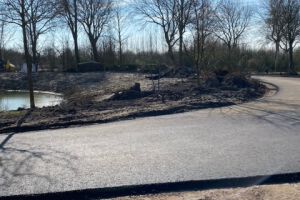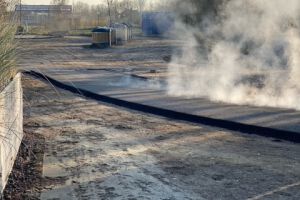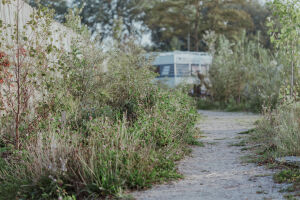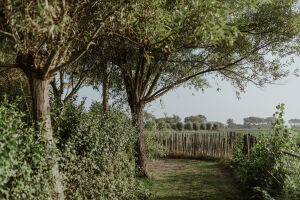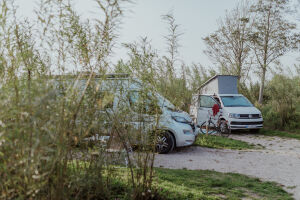WHY ASPHALT?
05 maart 2022
The new entrance of ONS BUITEN is currently being constructed. The design has a better flow and gives more space to nature and recreational areas than the original situation. A conscious decision was made to use asphalt. But why? Is asphalt really that sustainable? We are happy to explain our choice:
1. Positive Contributions
It was a difficult choice, which originally felt a bit 'unnatural', because asphalt is less durable than other common natural road surfaces. With the conscious choice for asphalt, we are nevertheless able to contribute even more to the enrichment of the ecosystems. An important reason is that asphalt is much cheaper. Instead of generating the smallest possible negative footprint in one place, we choose to have the greatest possible positive impact in other places.
What's up with that? We will set up the entrance for the most effective possible flow of inbound and outbound guest traffic. By definition, this is a 'high traffic' area, in other words: there is little room for nature activities. We can therefore have a smaller negative impact here by, for example, constructing a shell path, but there is still hardly any room for a large positive impact.
Eco-effective entrepreneurship is precisely about the latter: how do you ensure that you can have as much positive impact as possible in places where species other than humans can become increasingly numerous and can be increasingly successful in their contributions to the ecosystem. The focus is therefore more on optimizing positive contributions than minimizing negative impact. This is always a matter of balance of course.
By choosing asphalt we save enormously in a place where we can hardly have any influence and we invest those savings in places where the growth is (literally) enormous. Such as with the planting of new greenery.
Furthermore, with our way of green management we ensure that increasingly healthy soil life is created with worms, woodlice and even an intelligent network of fungi and micro-organisms. This makes plants stronger and more resistant to diseases. And birds get to eat more and healthier, and animals that depend on leaves, berries, nuts and fruit eventually get much better nutrients.
2. Restricted and Isolated Object
As indicated, this entrance area has a clear and defined function. The pavement is therefore also an isolated object, which is designed in such a way that it lies on the ground like one robust sculpture. But it also has a relatively open structure, with relatively much edge space, to which rainwater can easily flow away. Immediately next to it there is already room for greenery. And the roots of the shrubs and trees will also be able to grow well under the asphalt.
The asphalt is strong and will last for years and once it is in place it has no further negative impact on the environment. If it is broken down in the future, it can be reused as a raw material.
3. Savings on management
In contrast to much more sustainable pavements, the management for intensive use of asphalt is minimal. This means that little maintenance will be required. From day 1 there will therefore also be savings on the energy and resources associated with this.
The balance of minimizing the negative impact and optimizing the positive impact clearly works out well here at the entrance. In other places at ONS BUITEN, we consciously opt for more sustainable ways of road surfacing. Because due to the circumstances, such as less car traffic, for example, a different balance applies.
Tip: read this article about eco-effective entrepreneurship and green management by Jos Willemsen/Teaming with Life!
Translated with Google
